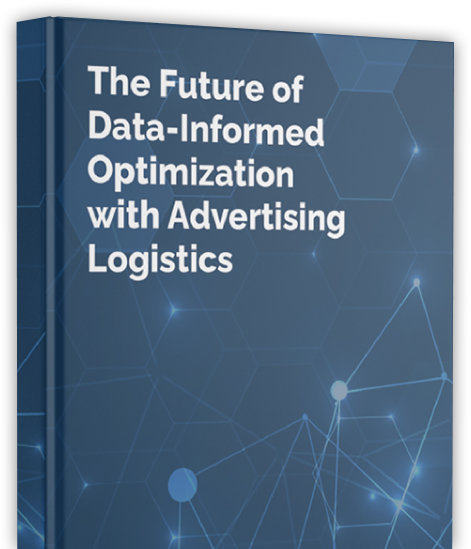Description
Digital advertising is moving toward a future in which ad delivery data will increasingly resemble information used by the shipping industry to track the delivery status of packages moving within its systems. In fact, the number of data points in programmatic ad tech far outweigh the volume of data in traditional shipping logistics, so it’s important to utilize technology to avoid rabbit holes and manage the complexity that is inherent in this space.
In this week’s episode, Stephen introduces Tony to his concept of Advertising Logistics and points out how many of the core aspects of an advertising transaction are being overlooked by the entire industry. PubWise plans to change that; they see gold in this overlooked data, and it goes a long way in raising the bar from satisfactory to optimal.
Transcript
Tony Winders: Hello, and welcome to another edition of On the SPOT. My name is Tony Winders. And today I’ll be putting PubWise Founder and CTO, Stephen Johnston On the SPOT about advertising logistics. Stephen, welcome back, and as always, thank you for lending your expertise to our deeper understanding of the programmatic ecosystem. Recently, you and I were speaking about supply chain optimization. And you brought up a topic or a concept that I hadn’t heard used before in the industry, which was advertising logistics, what did you mean by that?
Stephen Johnston: I really mean exactly what it would mean in other contexts. Let’s just answer the question, what is logistics? Logistics is the coordination of operations that move product from creators to buyers. That process is as old as time itself. And we think of it often as just shipping. We think of FedEx, or UPS as a logistics company. But logistics actually has a lot of detail under the hood, not just about the physical movement, but the source to consumer creation of products. And the way in which things are constructed from a logistics perspective of processes, may change based on the industry and where you are, but fundamentally, the offer of an ad through a system that connects it to a buyer, who then provides something to fill that ad is a logistics process. It’s a process that connects sellers to buyers. That’s why I’ve been using it and I think that we’ve brought into the advertising nomenclature and conversation; supply chain. Why are we talking about supply chain? Because supply chain is a logistics element, it’s just not the only logistics element, it’s just another way of describing it. So all of this stuff, ads.txt, sellers.json, supply chain objects in ORTB, all of those things are elements of the data that a logistics process puts out. And that’s why I think talking even more generally, about advertising logistics is useful.
Tony Winders: How would you compare it to the AdOps? What you’ve said is, it has a relationship to traditional supply chain logistics, and it’s not much different. But I guess I think of supply chain optimization, and I think of advertising operations. Is it higher level than that?
Stephen Johnston: Ad operations might be one component of it. We’re using a metaphor here. If you think of logistics in terms of Coca Cola, let’s think about it, you’ve got that Coke in your hand, you’re tipping it back, and you’re having that Coca Cola, “aha” moment from the commercial. What did it take to get there? Well, there’s a store you bought it from, there’s a truck that brought it, there’s the distribution facility that held it, there’s a bottler that had another truck bring it to the distribution facility. But, Coke’s specific implementation is, the bottler locally sources all their materials on their own. They don’t get this top down from Coke. In South America, they use cane sugar and in North America they use high fructose corn syrup. These things are made in the bottling decision. And then Coke makes sure that you get bottles locally, and as you go, it spiders out. The interesting thing is, because of their supply chain logistics, they can tell you things like, how long the bottle of Coke that you’re drinking sat in a portion of a warehouse and the temperature variances while it sat there for how long. So, put that into an AdOps portion, which may be one leg of that. You might think of traditional AdOps operations turning on ads, flighting ads, measuring them, as the last mile of that, as a distributor of the store operation. I think that when you get into programmatic, AdOps has largely gone to a reporting function, reporting on the programmatic. I’m really interested in the details. Who touched it? For how long? What did they do to it? How did it change as it went through these hands? Where did they get it from? Why? Who had it before them? Those are the kinds of things that we’re just starting to see come through supply chains, schain, and all that. How would you identify a bogus Coke? I am sure that somewhere out there, someone’s making fake Coke. And I think that there’s got to be metaphor and corollary. There’s things to learn from those processes that are thousands of years old, or at least hundreds of years old, in terms of how we think about production inside of advertising. I’m always interested in how you take something a hundred years old and apply it to something that’s ten years old.
Tony Winders: How sophisticated do you think advertising logistics is today versus twenty years ago, when the industry started, versus where we’re headed?
Stephen Johnston: I think it’s more about a representation and maybe a lag behind the evolving complexity of how ads get bought and sold. You could say there is none, but the reality is that you have one location that created it, another location that moved it, and multiple locations that sold it. It’s more like, yeah, you had everything you knew to know about that. You knew everything there was to know, you got it as a direct sale, you put it in the ad servers, the ad server went up on your website, and you had great logistics. Now what lagged behind was, as that sourcing and creation and delivery got more and more complex, the transparency and what we’re very interested in, observability, lagged behind that complexity of the transaction. So, a lot of the things that we now are dealing with in the industry are, how do you wrangle that back? Then realize that it is harder, it is more complex to do these things. It’s more complex to relate the data, and you can go down rabbit holes and track down a whole bunch of things that don’t matter. It’s like any other KPI and goals and metrics based system, what are you really paying attention to? Does it actually drive value? All those questions come into play, so how is it different now? The way that data is delivered on a website is tremendously more complex. And the logistics information about that transaction has dramatically lagged behind.
Tony Winders: Are they represented in the reporting or is there more to it? Are there systems that need to be built? Or is that what PubWise is building, ostensibly? What needs to happen for the industry to really internalize advertising logistics?
Stephen Johnston: I think it’s a component. We started working on fraud, which sort of brought up the fake Coke. So the first element is, are we getting a quality product? Think of it in terms of old logistics, has the product spoiled before it got to market? That’s kind of an old logistics question. We got a bunch of heads of lettuce out of the field, we stuck them in a truck, and then we drove them somewhere and they spoiled before they got there. We solved that with speed, the corollary in our industry is making those transactions fast, so they don’t rot. We’re fast enough now that the viewability is an element of that kind of logistics question. To build on top of that, variations of, you get a fake order, you deliver a bunch of stuff, and they’ll pay for all. That’s a logistics question in some ways, is the person buying this is real? PayPal deals with that kind of stuff. What’s our signal that this person paying for something, that someone else is going to ship, is a real person? You can put that in logistics terms, and we’ve done that with fraud detection, things of that nature. And we’ve talked about this in the context of Gannett and their issue with misrepresenting inventory, accidentally. If you treat that like fraud, then you look at it as a nefarious activity, so you don’t communicate. But if you treat it like a logistics problem, then what you’re trying to do is trying to make sure you get the data along the way to say that we were intending to do ‘X’, we did ‘X’, it got delivered, and where’s our receipt? Where’s the little thing you sign at the door? What’s the match to that in our industry? And how does it flow back through and everybody knows? The amount of transactions our industry does, would crush the systems that FedEx has in place, even though they’re a massively capable logistics company. We do 23 billion a second, they don’t do that. Then that comes into these elements of, how have these things been done in the past? And I think that the next element of this is, okay, you’ve fixed spoilage and that’s speed, you fixed fraud and that’s like verification of who’s buying and who you are sending it to. So the next thing is value. You have a process, and people have been talking about supply chain and reducing supply chain. The correlation in logistics is, reducing the number of people that touch something. But a company that is really sophisticated in logistics, like Coca Cola, would not say that the least number of people interacting with it is actually the most optimized logistics process, they actually have found ways to increase the number of people, but to provide logistics value. So, locally, certain things are sourced, remotely certain things are sourced. If you look at that from a purely logistics perspective, you go, “Wow, they blew up the number of people that are dealing with that.” That’s because they bring in smart technology, they bring in smart observability into that system, and they see that certain elements of more involvement provide more value. And I think that’s the next part of this conversation, how do you measure the relative value of the participants in the system? And that’s what we’re building.
Tony Winders: That’s incredible. I really have a newfound understanding of the whole supply chain in advertising. And I understand now what you meant by advertising logistics and why it matters. It really stems from traditional logistics, and is a representation of the complexity that we deal with and I hear themes of efficiency and optimization. And it’s clear why it ties back to observability, which is a mantra of PubWise. So I appreciate all that. Any parting thoughts on the topic of advertising logistics before we break?
Stephen Johnston: Yeah. I would just say that systems have actual complexity and that managing complexity is where the gain is, not simply removing it. I think there’s a massive opportunity, I think it’s super cool. The fact that we can refer back to historical similarities of really advanced, well-built systems means that we should be able to do good work here.
Tony Winders: Stephen, I always learn so much from you. Thank you for the insight and thank you to our listeners for tuning in to On the SPOT with Stephen Johnston, the CTO and Founder of PubWise. I look forward to having you on the show next time.





